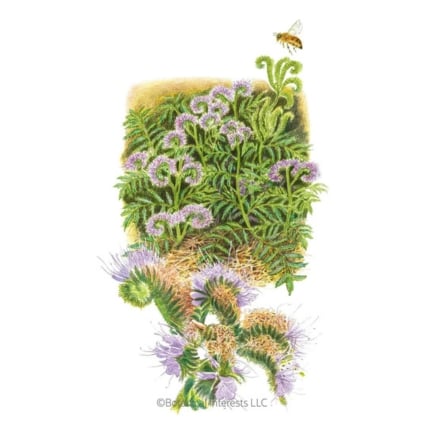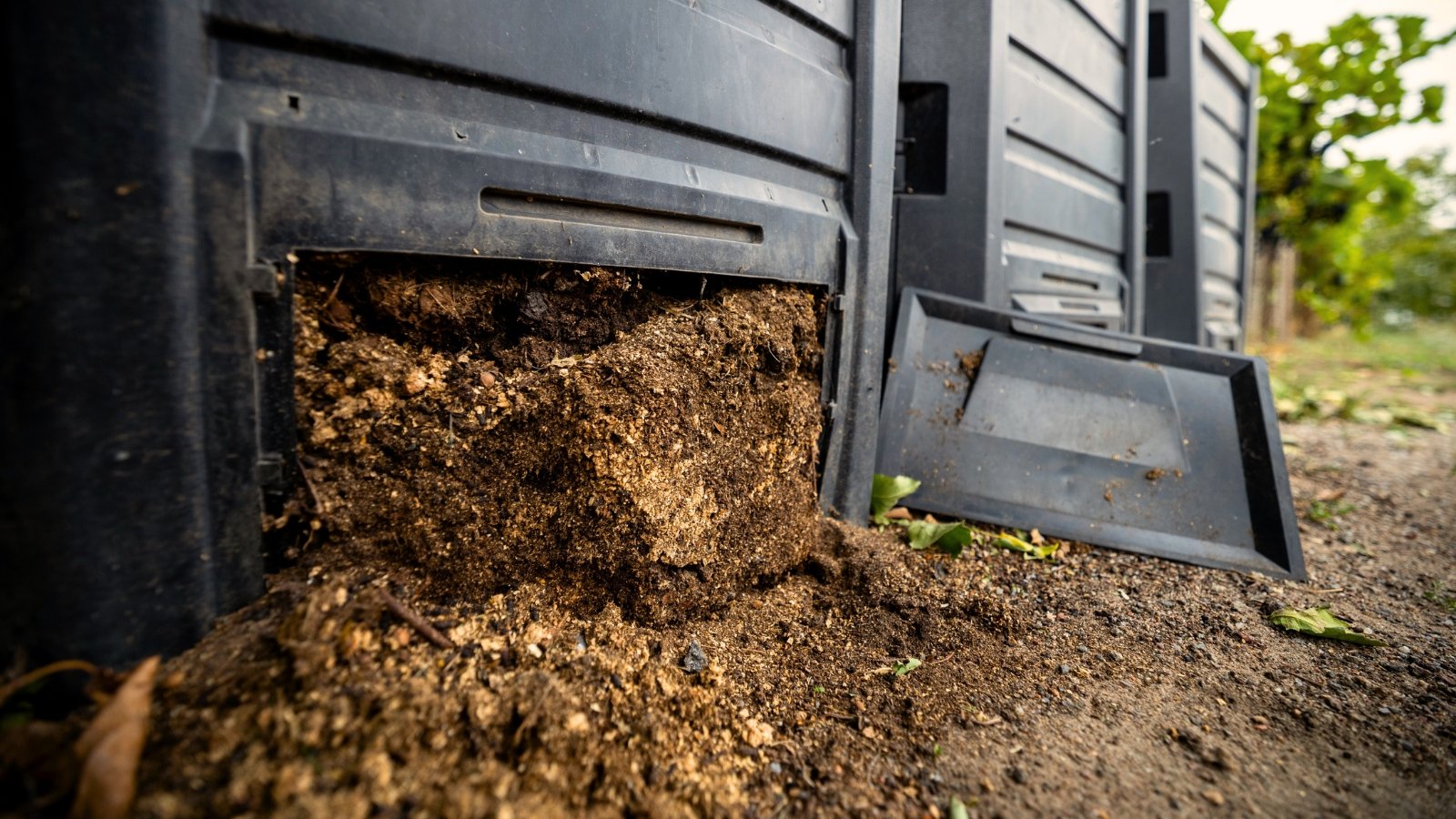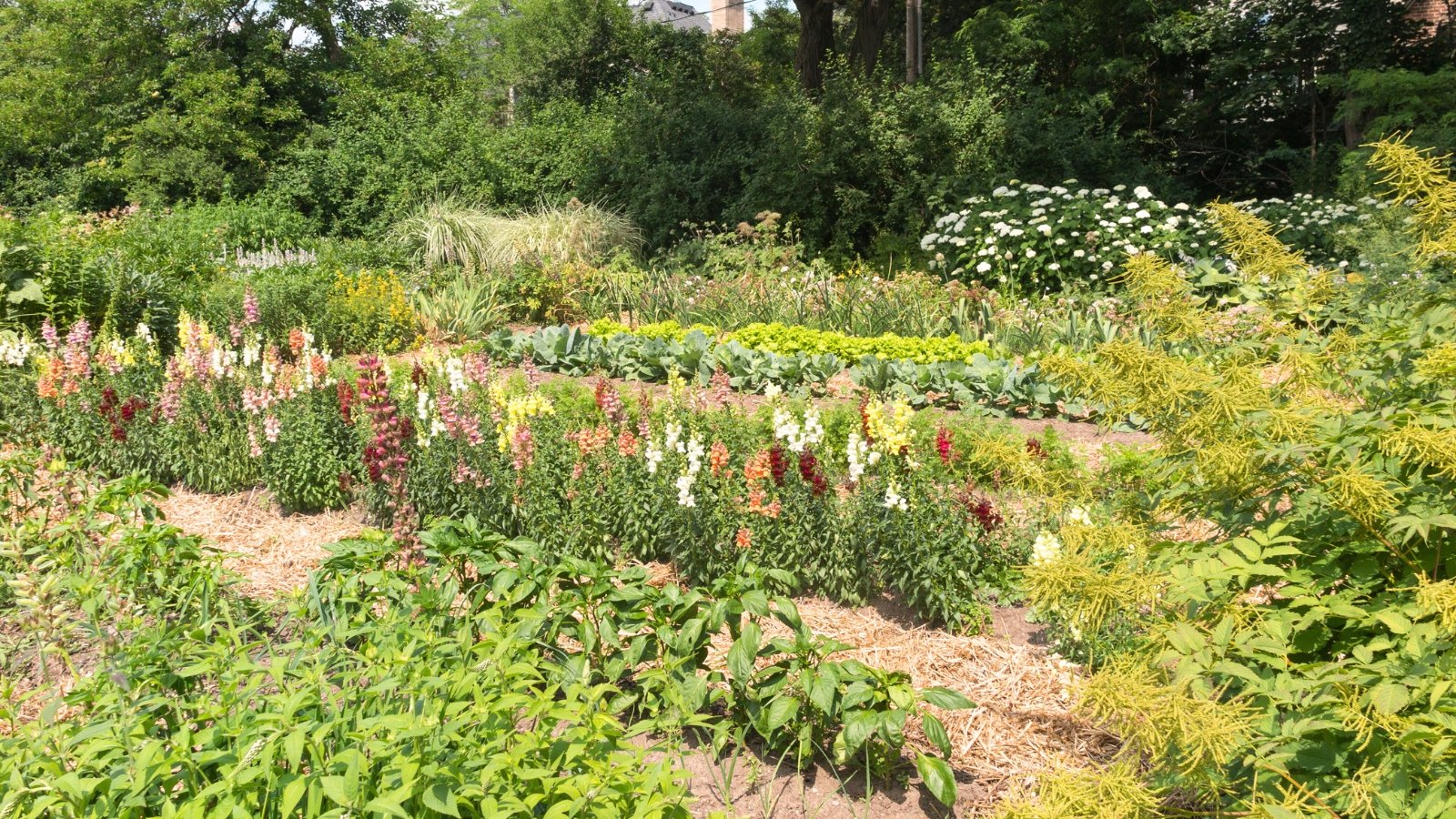PROTECT YOUR DNA WITH QUANTUM TECHNOLOGY
Orgo-Life the new way to the future Advertising by AdpathwaySoil is alive! It’s not just dirt. It’s made up of microbes, small creatures, minerals, and porous particles. Its health depends on its composition and its nutrient levels, among other things.
Loam is an ideal type of garden soil. It’s an even mixture of clay, sand, and silt. Porous, free-draining, yet absorbent, loam is the best type of soil mixture for vegetable and herb gardens.
We all have different soil types depending on where we live. Housing development often creates compacted clay in the process, meaning many of us deal with compacted soils. Others may have sandy silt, loamy clay, or any number of variations.
No matter your soil type, these 11 improvement methods will work well for you and your garden. Grab some compost and get ready to feed the ground!
Fava Bean Cover Crop

Fava Bean Cover Crop Seeds
Lacy Phacelia Cover Crop

Lacy Phacelia Cover Crop Seeds
Soil Builder Peas and Oats

Soil Builder Peas and Oats Cover Crop Seeds
Add Compost
 Looks like dirt, works like slow-release magic.
Looks like dirt, works like slow-release magic.We’ll start with compost because it’s the most beneficial of all the mulches! Compost is like a man-made version of the forest’s soil. In forests, dead animals, plants, wood, and fallen leaves pile up in a thick layer. They decompose over time, creating a rich, loose, and absorbent layer that covers the ground.
At home, you’ll make a pile of rotting organic matter to create a similar substance. Compost is a mixture of carbon- and nitrogen-rich materials, water, and air. After turning and watering a pile for three weeks or longer, you’ll have black, squishy, and earthy compost!
To improve the ground, simply add a layer of compost that’s two to three inches thick. Add it twice a year, once in spring and again in the fall. If the layer thins, you may add more to replenish it at any time.
Protect with Mulch
 A good mulch keeps pests guessing and roots happy.
A good mulch keeps pests guessing and roots happy.Compost is one type of mulch, but there are dozens more that you can use at home. A mulch is like a protective blanket. It stops water from evaporating, trapping it underground for plant roots to access. The thick layer prevents weeds from sprouting, pests from infesting, and diseases from infecting.
Aside from compost, these other organic mulches are superb for your garden:
- Wood chips
- Bark
- Leaf mold
- Fallen leaves
- Straw
- Manure
Wood-based mulches are better for woody shrubs and trees than they are for vegetables. Wood, as it decomposes, uses nitrogen. The more nitrogen the wood needs, the less there is available for your plants! Consider using nutrient-rich mulches, like compost or manure, in the veggie garden.
Repurpose Weeds
 Pulled weeds sun-dry fast and return nutrients right there.
Pulled weeds sun-dry fast and return nutrients right there.Weeds are pesky invaders! They sprout where you don’t want them to. If left to grow, they’ll spread throughout the site and use up all the valuable nutrients in the ground. Consistent weeding is important for soil health.
To further boost the soil, simply place the weeds back on top of the ground after you pull them. The hot sun will zap and kill them once they’re pulled. They’ll decay where you put them, releasing their nutrients back into the garden.
Though most weeds repurpose well, some are unruly! Avoid pulling and dropping spreading types like blackberry, mint, or knotweed—they may continue growing after you pull them. Chop them up before disposing of them, or throw them in a green waste bin for your city to repurpose.
Tread Carefully
 Raised beds near walkways save time and sore knees.
Raised beds near walkways save time and sore knees.Healthy soils have many small pockets. The pockets house water, air, and microbes that benefit your tender crops. When you step on the ground, you compact it and squeeze these pockets. They’ll disappear, and the earth will grow compacted, dense, and heavy.
To prevent having to walk on the ground, use pathways that allow access to all your beds, containers, and planters. Having dedicated pathways adds structure and style to your garden, creating a lovely scene. Line pathways with plants, then add woodchips or bark to walk on.
If your yard has a large lawn, simply mow where you want to walk to create walkways. You can let the surrounding grasses grow tall, and the mowed paths will be easily visible between the tall stalks. Then, when you want more garden beds, situate raised beds or planters near the paths for easy access.
Reconsider Tilling
 Chopping the earth breaks more than just clumps.
Chopping the earth breaks more than just clumps.Similar to treading heavily, tilling frequently has devastating effects on the soil food web! Though tilling can loosen the soil, better its texture, and free up clumps, it can also harm worms and microbes that create the underground microbiome. Each turn of the fork may cut worms in half and sever white fungal roots, called mycelia.
Instead of tilling, try insulating and feeding the soil food web instead. Its texture will get better over time as organic matter decays and microbes and worms enter the site. The more microbes there are, the healthier the site will be. Fungi, bacteria, and archaea digest larger particles, turning them into small ones that plant roots can access.
No-till gardening and farming methods are popular nowadays, as we’re learning more about the harmful lasting effects of tilling. If you have lots of acreage, consider looking for farming tools that function with no-till cultivation methods.
Replace Synthetic Fertilizers
 Those fast-acting crystals can wear the ground down.
Those fast-acting crystals can wear the ground down.Synthetic fertilizers also harm the soil food web; they destroy the microbiome! Also known as conventional fertilizers, these synthetic products directly feed your plants. They work quicker than organic fertilizers, but they have significant long-term effects on the worms, microbes, and structure of your garden soil.
When you use synthetic fertilizers, you feed the plants. Conversely, when you use organic fertilizers, you feed the soil microbiome, which, in turn, feeds your plants. The more you feed the microbiome, the better your soil will be!
It’s also easier to overfertilize with salt-based products than it is with organic types. Overfertilizing harms the soil, your plants, and the critters who live underground. I like to use synthetic types for houseplants or potted plants, as they’re not connected to the soil food web and are less reliant on fungi and bacteria than in-ground specimens.
Try Organic Fertilizers
 Bone meal today means stronger harvests tomorrow.
Bone meal today means stronger harvests tomorrow.The best fertilizers for optimal soil quality are organic ones. Organic types consist of animal by-products, minerals, and plant waste. You’ll see ones like feather meal, blood meal, and bone meal as options at garden centers and online retailers.
Organic types take longer to decompose and feed your plants than conventional ones. However, they have lasting benefits for future crops. Adding organic products with compost is the ultimate way to improve the soil quality. The compost helps the structure, while the fertilizer increases fertility.
To avoid overfertilizing, consider using a soil test to see the structure, fertility, and pH of your garden’s dirt. Once you have the results, you’ll know exactly which nutrients to add for the betterment of your veggies, herbs, and fruits.
Grow Cover Crops
 Empty beds crave legume roots and leafy insulation.
Empty beds crave legume roots and leafy insulation.As you can see, covering and blanketing the ground benefits more than just your plants. It helps worms, grubs, fungi, bacteria, and other creatures that improve the soil’s quality. One clever way to insulate the ground is with living plants!
Cover crops are a group of hardy plants famous for their soil-boosting qualities. Whenever you’re not growing veggies or leafy greens, you’ll plant these protective species to insulate the ground and prevent erosion.
Many are legumes, like fava beans. Legumes fix nitrogen from the air into a form that plants can use. This process, called nitrogen fixation, is a great way to add nitrogen without fertilizers. Others are frost-hardy, working well as fall or winter cover crops.
Plant More Plants
 The more roots in the ground, the richer it gets.
The more roots in the ground, the richer it gets.Alongside cover crops, another way to help the earth is by planting more plants. Whether they’re wildflowers, leafy greens, or herbs, they’re beneficial!
Plants partner with microbes near their roots. The longer they grow in the same spot, the more these microbes thrive. Eventually, the space around the roots will be moist, fertile, and porous. You may remove the plants and put other ones in their place, so they too can benefit from the good soil.
Flowering trees and shrubs do the same as veggies and herbs. Their roots form long-standing partnerships with underground microbes, creating a web of symbiotic relationships. So, to help your garden, plant more plants!
Know Your Soil
 A little test saves a lot of plant guessing.
A little test saves a lot of plant guessing.When in doubt, use a soil test! A soil test is an excellent way to understand your garden, its fertility, and which plants you can grow. Once you know what kind of soil you have, you can amend it properly so it matches what you’re looking for.
Some crops, like blueberries, have specific pH needs that differ from other crops. Unlike fertility and structure, pH isn’t easily identified by looking at or touching the ground. A test is the best way to find out how acidic or basic it is.
Many universities offer inexpensive soil tests, as do extension offices of these universities. Find a university near you, or try looking for master gardener programs. They often offer cheap tests for home gardeners.
Avoid Using Pesticides
 Pesticides can silence the underground chatter and hum.
Pesticides can silence the underground chatter and hum.If you’re a frequent pesticide user, you may see dramatic garden improvements after you stop using them. Pesticides can linger and damage worms, microbes, and other belowground creatures. They harm the food web, creating a lifeless site instead of a thriving one.
Rather than relying on chemicals, rely on nature! Predatory bugs and beneficial pollinators will help control pest populations. Invite them to your garden by planting wildflowers, native plants, and flowering shrubs. The more habitat you provide, the more critters will come.
If you do choose to use pesticides, opt for products that target the specific pest you identified. Avoid broad-spectrum pesticides, as they kill indiscriminately. They can kill bees, birds, butterflies, and moths. For more pest control options, consider looking into integrated pest management techniques.


 3 weeks ago
15
3 weeks ago
15





















 English (US) ·
English (US) ·  French (CA) ·
French (CA) ·